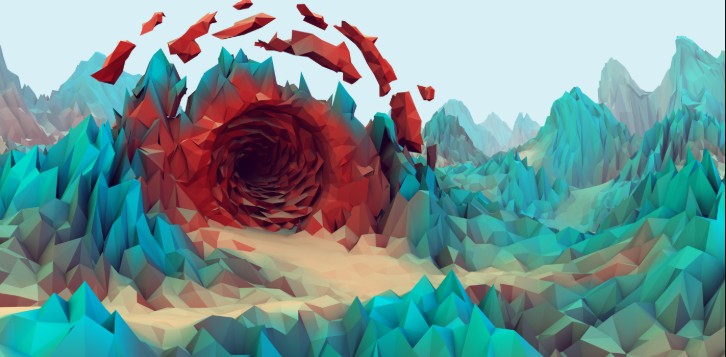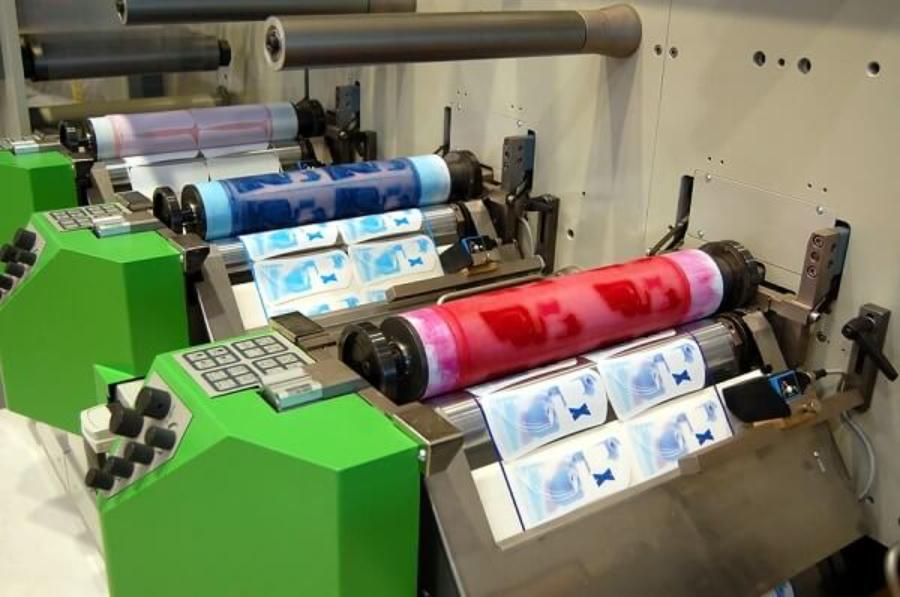Best Selling Products
Easy Layout Design with 5 Basic Layout Rules
Nội dung
- 1. Basic information about Layout
- 1.1. What is layout?
- 1.2. What is a Template?
- 2. Main elements in layout
- 2.1. Text
- 2.2. Images
- 2.3. Geometric elements
- 2.4. Lines
- 2.5. Whitespace
- 3. 5 main layout design rules
- 3.1. Rule of thirds
- 3.2. Balance rule
- 3.3. Emphasis rules
- 3.4. Odd number rule
- 3.5. The Grid
Layout in graphic design is simply understood as the arrangement of content as well as graphic elements in the design for the purpose of uniformity and reasonableness for the publication. This includes arranging the layout, presenting details by adjusting the ratio, distance and determining the position of the parts appearing in the design.

A beautiful design is not necessarily effective if the viewer cannot receive information easily. This is when the layout, the “framework” that arranges all the elements, plays an important role in guiding the viewer’s eyes, creating a sense of coherence and professionalism. In this article, we will learn more about Layout . You may not pay attention to the layout, but a good layout always adds value to the message and enhances the user experience.
1. Basic information about Layout
1.1. What is layout?
The term Layout in graphic design is simply understood as the arrangement of content as well as graphic elements in the design for the purpose of uniformity and reasonableness for the publication. This includes arranging the layout, presenting details by adjusting the ratio, distance and determining the position of the parts appearing in the design.
More specifically, Layout includes the operations you use to design the presentation for your publication. You need to pay attention to aligning both the content and images, details to make them reasonable and beautiful. What is the appropriate margin, how much space is needed for this publication, what is the appropriate distance between cells, ... all the answers will help you complete your design with a beautiful Layout.
.png)
1.2. What is a Template?
Templates are layout templates, which are available designs with any color and layout. When you need to use a Template, you just need to download these available templates and add content, information or edit the graphics according to your purpose or preference, as long as after completion you have your own satisfactory product or meet the needs of customers.
With such available templates, you can use them in many different fields or subjects. The layouts are arranged in the simplest and most popular styles to help you complete your publications faster as well as suggest other unique layouts for your reference. Thus, even if you are not a professional designer, you can still use available resources such as Templates to complete your publications.
Available templates that you can refer to and use as presentation slides in Powerpoint software, templates in the field of web design or available templates for text editing in Word, etc. These tools all have friendly interfaces and are easy for you to use and create in your own way.
From the arrangement of text and images to the choice of colors and fonts, every element of a layout contributes to the success of a design. Layout is not only an important step in the design process, but also the key to communicating a message and making an impression on the audience.
.png)
2. Main elements in layout
An effective design layout depends on the harmonious arrangement of key elements to create a compelling visual experience for the viewer. So what are the key elements in a layout?
2.1. Text
Text is a fundamental element of any design and the way it is presented can significantly impact the overall aesthetic of the design. Text elements include:
Fonts: Specific fonts can have different styles and you need to choose the font that suits your design. For example, Times New Roman can create a traditional and formal feel, while Helvetica is more modern and suits a minimalist style.
Typography: Typography is the art of arranging and presenting type to create aesthetic effects and effectively convey messages. Typography includes other aspects such as kerning (space between characters), tracking (space between words) and leading (space between lines).
Size: Text size is a factor that determines the priority and emphasis of the content. Large text is often used for headlines or important information that needs to be emphasized, while small text is often used for main content.
Line and letter spacing: The spacing between lines (or leading) and the spacing between characters are important factors in readability. Properly spaced lines and characters make text easier to read.
.png)
2.2. Images
Images are a powerful tool in layout to make a design more appealing and communicate a message effectively. Choosing attractive images as well as arranging their position and size are important to creating a balanced layout. Images contribute to layout design through:
Visual Impact: Images have the power to grab the attention and engage the viewer. Whether it’s a photo, illustration, or infographic, the choice of image should reflect the purpose and message of the design.
Size and Position: The size and position of images within a layout affects the overall balance of the design. Large images can be used as accents, while smaller images can be used to complement text.
Consistency: Consistency in visual style such as using the same filter or color treatment can give consistency to a composition and reinforce its overall theme.
2.3. Geometric elements
Shapes are used to create structure and emphasis in a composition. They can serve both functional and decorative purposes:
Structure : Geometric elements can be used to frame the layout, thereby organizing content in the most appealing way.
Emphasis: Irregular or custom geometric elements can draw the user's attention to specific elements or areas of a design. They can also be used to highlight key information or create impact.
Unity and Connection: Geometric elements that appear repeatedly in a design can create a sense of unity and connection in the design. This helps to connect different elements and gives the layout a more harmonious feel.
.png)
2.4. Lines
Lines are incredibly versatile design elements that can serve a variety of purposes:
User Navigation: Lines can be used to direct the viewer's attention as they look through a design. They can direct attention to points of focus.
Division: Lines can act as an element to separate different parts of a layout such as columns of text or groups of images.
Create the Effect of Motion: Curves and diagonals can be used to evoke movement and convey a particular energy. For example, imagine you see an image of a car with a curve, you might think that the car in the image has just turned.
2.5. Whitespace
White space is the empty area around and between design elements. In layout design, this white space also has its own role:
Create a resting space for the eyes: White space creates a resting space for the user's eyes and prevents them from having to continuously receive information.
Make information clearer: White space helps ensure that elements aren't "crowded" and makes content easier to understand by separating different pieces of information, reducing confusion for readers.
Highlight key content: White space can be used strategically to draw attention to key content like headlines or call-to-action (CTA) buttons.
.png)
3. 5 main layout design rules
When designing layouts, there are some rules that can help you create a more beautiful and harmonious layout. These rules have been applied by many users and have become one of the basic design knowledge that anyone who wants to pursue a career in graphic design should know.
3.1. Rule of thirds
The Rule of Thirds is a fundamental principle in design and photography. It involves dividing a composition or frame into a grid of nine sections by drawing two horizontal lines and two vertical lines, creating four points of intersection. Important elements in the composition or frame should be placed near or on these points.
The rule of thirds is based on the principle that placing key elements at intersections creates a sense of harmony and creates a stronger focal point in a design. Elements such as main objects, text, lines, or important geometric elements should be placed at intersections or along dividing lines.
.png)
3.2. Balance rule
The rule of balance in design is an important principle for creating a harmonious, attractive and pleasing composition or image. This principle ensures that the elements in the design are arranged in a balanced way, with no space being too empty or too stuffy, creating an overall balance and harmony.
There are two types of balance in design:
Symmetrical Balance: This is a type of balance in which elements are evenly distributed and symmetrical about a central axis. The elements will be balanced in shape, size, color, and position relative to the main axis. Symmetrical balance often creates a sense of stability, tradition, and formality in a design.
Asymmetrical Balance: This is a type of balance in which elements are not distributed symmetrically but still create a sense of balance and harmony. Asymmetrical balance can be achieved by considering the size, color, density, and placement of elements in a design. Asymmetrical balance often creates a sense of creativity and dynamism.
.png)
3.3. Emphasis rules
Emphasis in layout design is an important rule for creating a strong focal point and drawing attention to a particular element in a design. This rule helps create contrast and distinction between elements, highlight an important element or convey a particular message.
There are several ways to apply the rule of emphasis in design:
Size: Using a larger size for one element compared to the others will help it stand out. Larger elements tend to make a stronger impression and attract more attention.
Color: Use contrasting or special colors to highlight a particular element in the design. Bright or bold colors attract attention and create a focal point.
Contrast: Using contrast in color, such as light and dark, or contrast in shape can help emphasize an element. The contrast between elements helps the viewer recognize which element is being emphasized.
.png)
3.4. Odd number rule
The “Rule of Odds” in layout design refers to the use of odd numbers, such as 1, 3, 5, to create balance, harmony, and appeal in composition and artistic design. The rule of odds originates from the design principle that odd numbers are considered more appealing than even numbers.
In fact, the human eye tends to move towards the center of a group of objects. When there are odd numbers, the center point is more clearly defined, creating balance and stability in the composition.
For example, you might use 3 images, 5 icons, or 1 main headline and 3 subheadings in your design. The rule of odds also applies to photography to create a more pleasing composition.
3.5. The Grid
A grid is a system of virtual rows and columns used to divide a design space into distinct areas and create a logical structure. The grid helps define areas and spaces within the design, while creating a logical alignment and communication system. The grid rule is also considered one of the 25+ latest SEO-standard website design trends in 2024.
.png)
Grid rules are a useful design tool that helps create a consistent, balanced, and visually pleasing layout. Columns and rows in a grid are aligned with certain spacing and margins. The spacing between columns and rows helps create balance and avoid clutter in the design.
Layout is the backbone of any design and determines how your audience “reads” and interacts with your product. Whether you work in print, digital, or interactive experiences, understanding the concepts, principles, and processes and practicing them will help you create designs that are not only beautiful but also compelling .












































